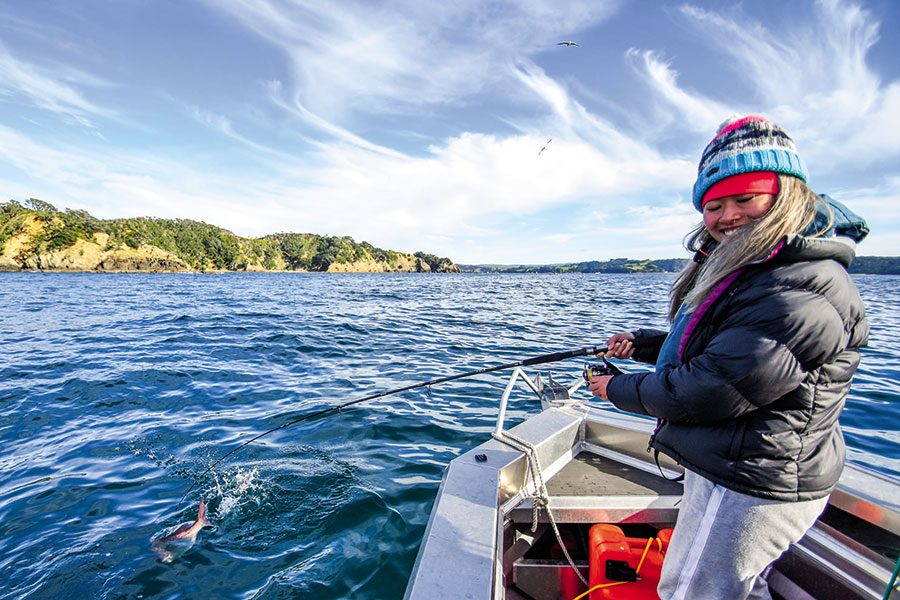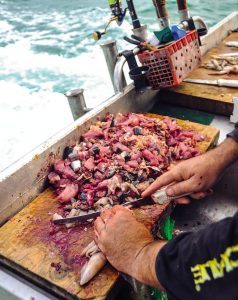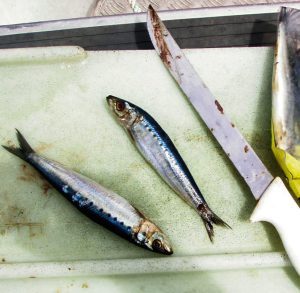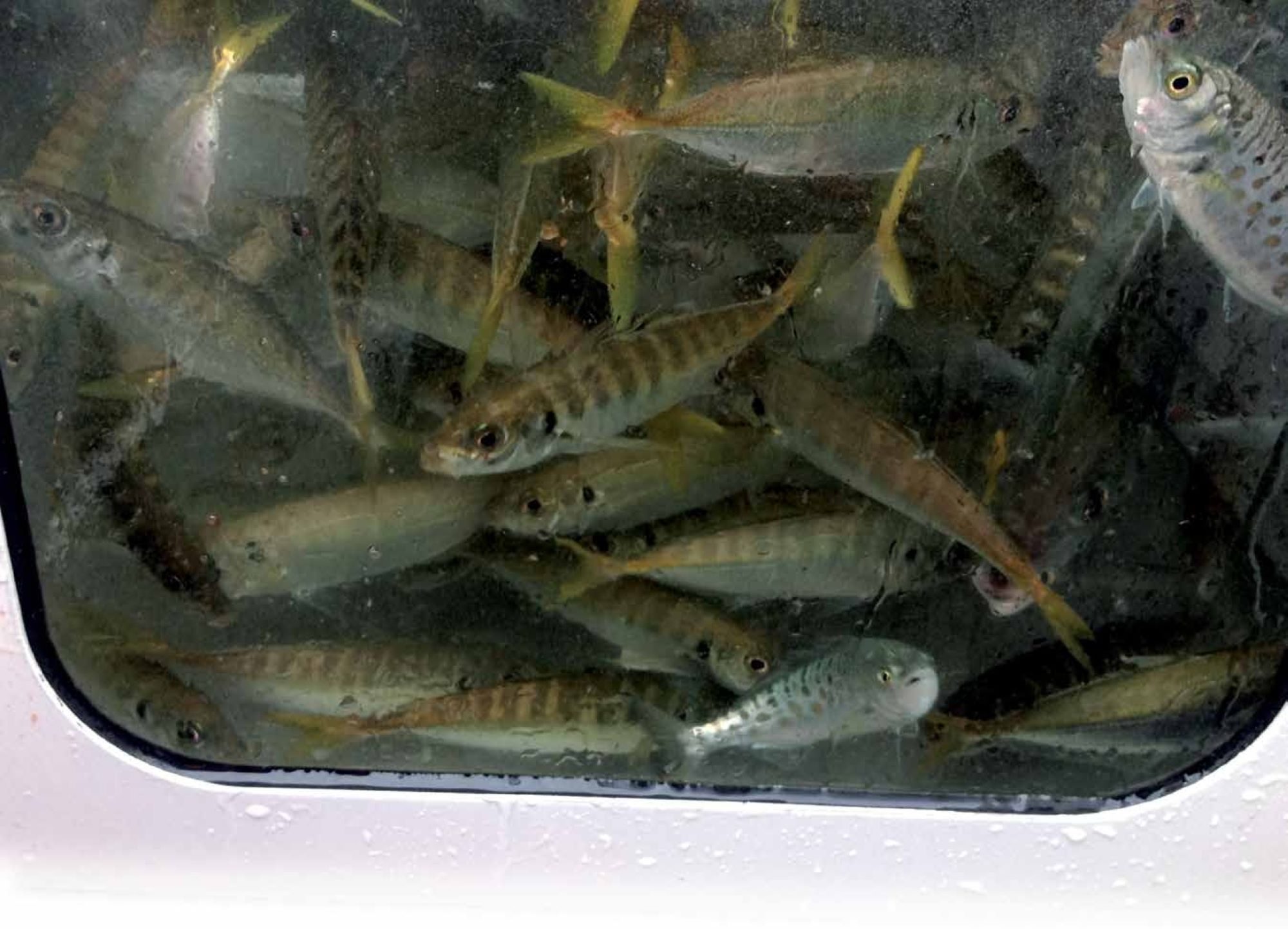

I always feel a little sad when the last vestiges of summer disappear and winter can no longer be denied.
In 2021, like last year, the transition took longer than usual, with an Indian summer of warm, mostly fine weather lingering into May. It meant that late summerautumn fishing patterns also lingered, with predators hounding anchovies and other bait deep into the month.
In one well-documented event in late April, baitfish threw themselves onto the sand at Rothesay Bay to escape kahawai, small kingfish and snapper, only to fall prey to hundreds of gulls awaiting them on the beach. This was doubtless just one instance of many.
 Don’t forget about species like john dory.
Don’t forget about species like john dory.
Certainly, April provided some entertaining fishing in among the seemingly inexhaustible bait schools that were everywhere close inshore among the islands of the inner Gulf and along the east coast beaches from North Head to Whangaparaoa and beyond.
Bait schools were also common inside the Waitemata Harbour, extending up past Kauri Point, tailed by kahawai, snapper and a few kingfish. April and early May provided good fishing for those who knew how to target predators keyed-in to feeding on small bait fish.
Considering the feeding frenzy that goes on every year when the baitfish schools are thick in the inner Hauraki Gulf in autumn, I’m surprised some fishers struggle to put fish in the boat, but I see it playing out every time I’m on the water.
Anglers anchored up and fishing baits on dropper/flasher rigs (the most common method), as well as those fishing larger stray-lined baits, can struggle when most of the fish are chasing schools of moving bait. Sure, bites will often come in flurries, usually by chance when bait schools (and their predators) move closer, but for much of the time anchored boats are fishing water devoid of any fish.
In autumn in the inner Hauraki Gulf virtually all predatory species – snapper, kahawai, kingfish, trevally and others – are associated with the bait schools, rather than spread out over wider areas and feeding off the bottom. The key to success is finding the bait and fishing around it.
Lure fishers, especially soft-baiters, can do really well when baitfish are thick, provided they follow the action and fish close to it. However, with all the natural bait around, feeding fish can be selective when it comes to lure size, so downsizing your soft plastics sometimes pays dividends when fishing around anchovies.


Kaipara Harbour winter gurnard; Preparing berley chunks


Inshore winter school snapper; A selection of squid jigs.
Five-inch (13cm) baits usually get bites, but larger seven-inch (18cm) models may not – after all, most anchovies are only a few centimetres long. Change down to 4-inch (10cm) baits, however, and the strike rate improves markedly; 3-inch (7.6cm) baits can be even better, but It’s hard to find jig heads suitable for 3- or 4-inch soft baits.
To look natural, small soft baits should be rigged on small, short-shanked hooks, but the smaller, lighter jig heads are really meant for smaller fish such as Australian bream, targeted on much lighter tackle. When fished with heavier snapper gear, the hooks straighten or break. Small jig heads also tend not to weigh enough to be very useful on snapper.
When selecting jig heads for small plastics, look for heavier gauge hooks. There are a few small jig heads in the 1/16th to -1/8th ounce range with suitably heavy gauge hooks – ¼-ounce and heavier are harder to find.
Fortunately, when fishing around anchovy schools, head weight is not super-important, since a slow fall is what you want from the soft bait. So don’t be afraid of using light jig heads. Nearly all the bites come as the bait is falling through the water column – when a bait ball is being smashed by hungry predators there are lots of dead and dying baitfish sinking slowly towards the bottom. A lightly weighted soft bait looks exactly like one of them – sometimes an unweighted plastic is the best option of all. Just make sure it sinks because some unweighted soft plastics float.
Sadly, the sort of autumn fishing we’ve enjoyed so much the last few months is now history and a winter fishing pattern is settling in. That means a change of focus from chasing bait schools to seeking out areas that hold snapper during the colder months, as well as directing effort towards catching other species that are more prevalent in winter – trevally, for instance, and gurnard.



A good- sized shallow water winter snapper taken on a soft plastic. (left)
Winter snapper fishing out wide among the work-ups can be excellent. (centre)
Bait fishers should consider using smaller baits in winter. For instance, cut pilchards in half. (right)
In northern parts of the country fishers are able to fish all year round. The weather dictates when they can fish, but seldom shuts down fishing opportunities for long. And there are always plenty of fish to catch. Kahawai is available all year and snapper fishing, especially out wider in the Gulf among the workups, can be very good too.
A few snapper, kahawai and john dory can usually be found inshore. Fishing rocky shores and reef areas with bait and berley or soft plastics works well, though bite times can be short. I usually enjoy fairly consistent winter fishing for snapper right through winter fishing worm beds, open coasts, inshore reefs and broken rubble in relatively shallow water.
And winter fishing turns up some surprisingly big specimens as well, even in areas that see plenty of fishing pressure. For me, most winters yield a big snapper or two among the usual run of average-sized fish. And while kingfish are scarce inshore, kahawai cruise the white water and current lines around rocky coasts and trevally are relatively common.
Squid are not fish, but they are a welcome winter bycatch. Occasionally we’ll deliberately fish for them, but they tend to be accidental catches. If there are lots of squid contacts, we might toss out a squid jig and try our luck. Even an unattended squid jig trailing behind the boat as it drifts along a rocky shoreline can result in a tasty meal of squid, which makes a welcome change from snapper.
In general, winter fishing is harder going than spring and autumn fishing, but slowing down – slower retrieves, making repeated casts to prime areas and fishing each area more thoroughly – should do the trick for soft baiters, while bait fishers should exercise patience, use berley (but not too much) and consider employing smaller baits.
They might have to brace for the elements, but for patient anglers winter provides rewarding and satisfying fishing. BNZ




